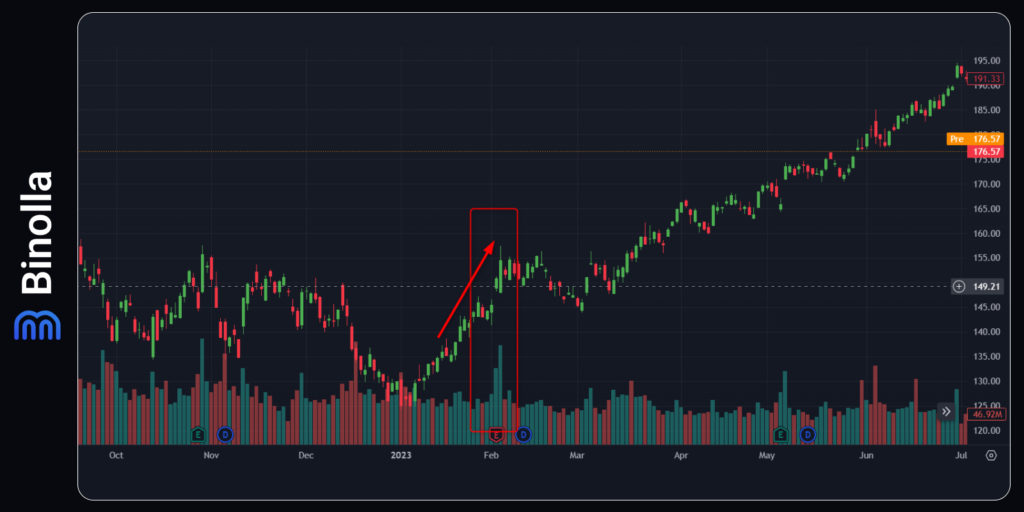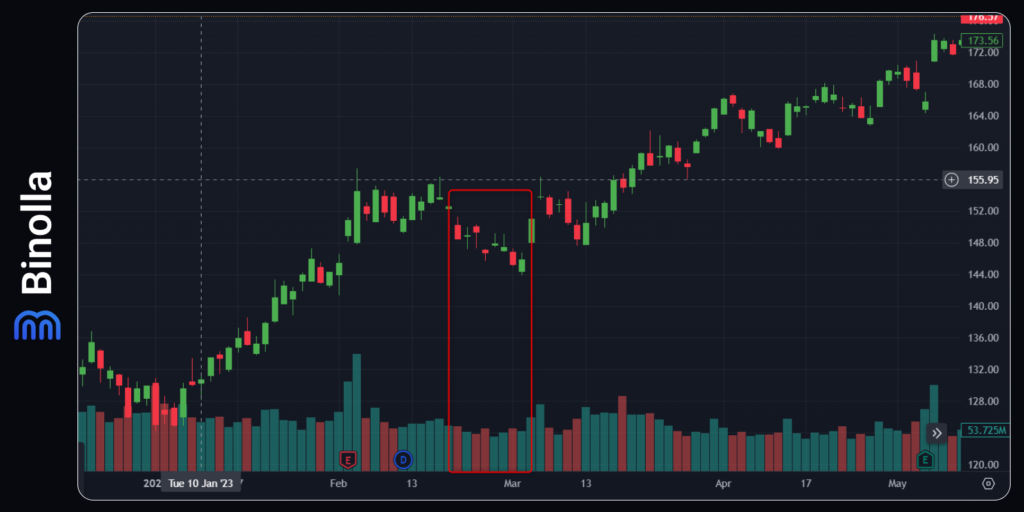Trading Volume: How to Use It, A Detailed Guide

Trading volume is what makes waves in each trading discussion. While you can find pure volumes in stock trading as shares are presented on particular exchanges, when it comes to Forex, volumes are disputable, as it is impossible to reveal true ones when it comes to the interbank market. In this article, we are going to provide you with information about trading volumes and their usefulness in various markets. Use this knowledge to start trading profitably at Binolla.
Contents
Trading Volume: What Is It Affected By?
Volume changes in trading can be explained by changes in market moods. When they rise or fall, something stays behind price movements. As you may probably know, fundamentals, along with breaking political and economic news, are the main drivers that may contribute to volume changes. Here are some key factors that may cause higher trading volumes in Forex, cryptocurrencies, commodities, or stocks:
- Time. Trading volume is highly dependent on time. For instance, if you are trading US stocks, you should know the exact work time of local exchanges. The same can be applied to any other stocks in any other region. Currencies, in turn, are traded 24/5, but even in this case, trading volumes are not similar throughout the day. For Asian currencies, the most active time coincides with Japanese and Chinese exchanges, while for EUR, for instance, the most active trading time is during the open hours of European exchanges;
- Economic data. All assets are subject to economic influence. When a government wants to stimulate economic growth, central banks are likely to cut rates, which leads to trading volume growth as traders get rid of a currency. On the other hand, this may lead to a surge in stock prices as lower interest rates lead to higher volumes of cheaper liquidity, which, partially, goes to financial markets;
- News (both political and economic). News, especially when it comes to breaking news, is known for its massive impact on volumes. They provoke panic, which, in turn, leads to significant trading volume growth. Positive news, in turn, may lead to market euphoria and increase trading volumes as well. Unexpected events always have a higher impact on trading volumes;
- Technical analysis and levels. When the price is close to key levels, both support and resistance, you can expect significant growth in trading volumes when it breaks those lines. A lot of professional traders look at those levels to predict whether the volume is going to grow or drop.
Trading volumes may also be affected by a particular day of the month or year. For instance, during national and international holidays, trading volumes are normally lower, which can be clearly seen in charts. The logic behind this is simple. Even if exchanges or Forex may work on such days (or be closed), the number of market participants is drastically lower than usual, which leads to lower volumes.
A good example of this is the 4th of July in the United States. While other markets are working, volumes will be lower this day as US market participants are not engaged in trading.
Trading Volumes: General Tips
Volumes can be used in various ways, especially when it comes to stocks where this parameter can be clearly seen from a particular exchange. Here are some recommendations that traders can use to apply trading volumes in their everyday trading routine.
Confirmation of a Trend

All trends are supported by higher traders’ interest in a particular asset or a group of financial instruments. The price needs fuel to go further, and trading volumes act as gas in this case. If you see an increasing price that is accompanied by decreasing volumes, this means a lack of interest in a particular stock, and there are risks of further reversals. In general, each significant price movement on lower volumes is not a trading signal, while when the price is driven by higher volumes, it can be considered a strong signal.
Trend Exhaustion

Trading volumes may be particularly useful when it comes to finding reversals. If you see sharp price movements that are not confirmed by increasing volumes or price reversals, which are accompanied by huge trading volume growth, then you can expect the price to reverse and the previous trend to end.
Bullish signals

When the price goes up and then moves down without any increase in volumes, this means that bears are not able to push the price lower. In most cases, such signals can be interpreted as bullish.
Breakout and false breakouts

Range breakout strategies are very popular among traders. Confirmed by increasing trading volumes, they can be even stronger entry signals. On the other hand, if you see a breakout that is not confirmed by volumes, you can expect the price to return below resistance or above support, as this situation is known as a false breakout.
Can I Rely on Volume Data?
The reliability of the volume data depends solely on its source. If you are trading stocks, you get direct volume information from exchanges that record each transaction and its amount and, therefore, can provide you with exact figures.
The accuracy of Forex trading volumes is under question. As we have already mentioned, it is impossible to collect exact information about each bank that conducted transactions and put it together. Therefore, you can’t see the real volumes when it comes to FX.
What traders have invented is to look at tick volumes instead. This approach is based on the number of price updates that take place during a particular time interval. While it seems to be a good method as each price change can be treated as a change in volume, the reality is different.
With all the above in mind, you can rely on stock exchange data, while with Forex ticks, there is a lot of controversy, and by the end of this article, you will be able to make your own decision whether to believe tick volumes or not.
Tick Volume on Forex: Pros and Cons
Tick trading volume is something that you can measure with each price change. Therefore, it may seem ideal for calculating trading volumes when it comes to the FX market, but before using it, we recommend you read the following pros and cons.
Tick Volumes Pros
The advantages of this method include:
- This type of trading volume measurement allows you to have at least a superficial understanding of the amount of trades throughout the day;
- While the situation may differ from broker to broker, tick volumes can provide you with useful data at some points.
As for disadvantages, they are the following:
- First and foremost, a single price tick tells you nothing about the real situation in the market. A slight price change may be provided by the rising volume, but sometimes the price moves on lower volumes as well. All-in-all, you can’t be sure that tick volume shows you useful information;
- Broker data feeds differ from one company to another. With this in mind, you can’t be sure that tick volumes reflect the actual situation.
Should I Use Tick Volume for Trading?
While real exchange volumes for stocks can be very useful in various situations as they reflect the real situation with interest towards a particular asset, tick trading volume is sometimes called “fake” due to its nature.
Using this type of trading volume may be useful in various strategies, where volumes are not the only indicator of a trend or reversal and may even be helpful. We are talking about signal confluence all the time in our articles, and when it comes to tick volumes, this is the case. Adding them to strategies will unlikely bring any harm. However, you should be careful, especially knowing that the data flow from various brokers varies.
Anyway, it is not recommended to rely solely on tick volumes. This information should be confirmed by other indicators or price patterns. Always remember that price chances may be with or without volumes. Therefore, if you have signal confluence from tick volume and other indicators or patterns, this is where you can engage in trading.
Conclusion
Trading volumes in various markets mean interest in assets. In other words, if market participants of all types treat an asset as a promising one, they are going to buy it, which, in turn, will lead to volume growth. On the other hand, if there is no interest in the asset, you can see the volume plunging.
You should keep in mind that there are two main types of volumes in trading. First, it comes directly from exchanges, and it can be called “real” volume as it reflects the amount of trades that were made on this exact trading floor (even when it comes to online exchanges).
The second type is known as tick volume, and you should think twice before trusting it. It is based on price ticks, which, in turn, can be made with or without real volume growth behind them.
FAQ

What is the Meaning of Trading Volume?
This is the total amount of stocks or other assets that were bought or sold during a particular time interval.
What Can Trading Volumes Tell You?
First and foremost, trading volumes tell you about the interest in a particular asset. When they rise, you can assume that the interest in the asset is growing, and, therefore, you can expect a trend in the future.
Why Trading Volumes Are Important?
When it comes to stocks and real trading volumes, their importance is hard to overestimate. You can see the real interest in a particular asset, which means you can predict its future price movement direction based on this information. However, when it comes to tick volumes, you should always be careful with them, as they are not real volumes from exchanges, but price ticks instead.
What Does Low Volume Mean?
Low volume normally means a bearish trend, as fewer market participants are interested in a stock or other asset. Therefore, the price goes down.







